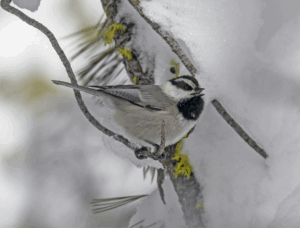New research is finding that butterfly populations have been in decline since the 1980s. The main causes of decline has to do with loss of habitat and energy storage, according to the study.
The recently published research was conducted by a team of biologists, including the University of Nevada, Reno’s very own Dr. Matt Forister. The team found the main driver in the decline comes from changes in temperature and precipitation patterns associated with climate change.
Warming temperatures during the fall are particularly influential. Fall is an important season for caterpillars because this is the time for them to save energy for the winter. Warmer temperatures can delay or disrupt this rest period. Now, by the time winter comes around, these animals don’t have the energy necessary to lay dormant, resulting in death or slow growth in the spring.
Precipitation on the other hand has had an effect on water availability for vegetation that butterflies rely on, typically flowering shrubs and trees. In the Reno area specifically, warming temperatures and changes in precipitation patterns have caused a decrease in snow pack as well as periods of snowing and quick melting. These changes result in variability of how much water flows in the Truckee River during the spring, which is essential for native vegetation. Increasing temperatures and changes in precipitation are likely to continue regardless of climate change mitigation efforts, but there are some ways that the average person can support butterfly populations.
Your yard can help. Growing a backyard pollinator garden should include native plant species, a variety of plants that will bloom in different seasons, and shrubs with plenty of flowers, say Will Pierz from the Carson City Greenhouse Project and UNR’s Integrated Pest Management Educator Dr. Kevin Burls.
Providing flowers throughout the year helps to supply adult butterflies with nectar; a primary food source. After establishing these types of vegetation, refrain from using non-organic pesticides.
Chemical pesticides are harmful to pollinators and the biology of the soil. Instead, organic pesticides, manual pest removal, and predatory bugs can be used to manage your pollinator garden.
It is also important to be involved in your community’s efforts to mitigate climate change, and the development of green spaces including parks. Forister recommends simply calling your local city parks and asking about their pesticide usage as a way to kickstart a larger conversation about environmental protection.





